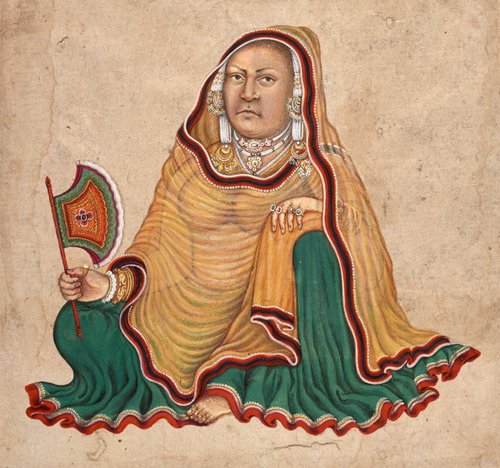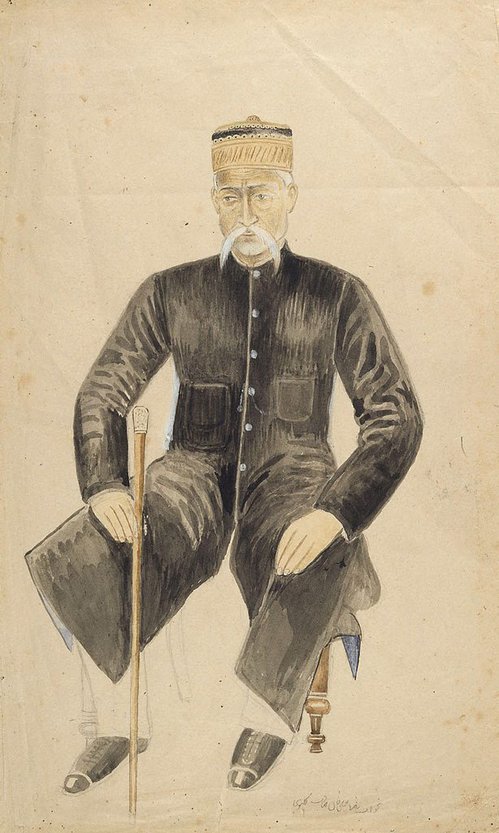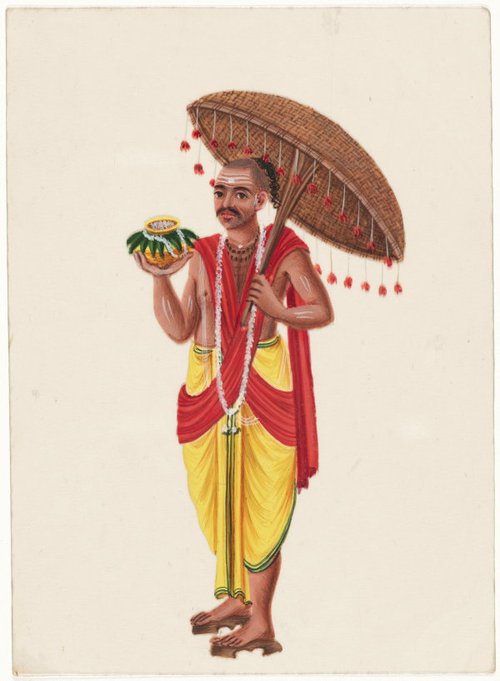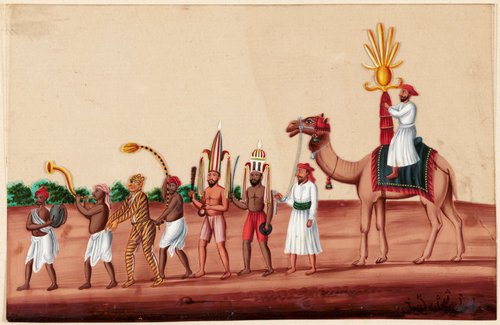-
Details
- Place where the work was made
-
Thanjavur (Tanjore)
→
Tamil Nadu
→
India
- Date
- circa 1770
- Media categories
- Painting , Watercolour
- Materials used
- opaque watercolour on paper
- Dimensions
- 22.0 x 17.0 cm sight; 59.0 x 44.0 cm frame
- Credit
- Gift of Sheila Palmer 2008
- Location
- Not on display
- Accession number
- 316.2008
- Copyright
- Artist information
-
Company style
Works in the collection
- Share
-
-
About
The so-called ‘Company School’ emerged in the latter part of the 18th century, when the British overthrew both the Mughal and the Rajput rulers of India. Indian artists, who had previously painted for Mughal and Rajput patrons, instead began painting for the English residents of India, many of whom were employed with the British East India Company. Pictures painted for the British by Indian artists in a westernised style to suit the taste of the new clients came to be known as ‘Company Painting’. Company school artists mostly recorded the ‘exotic’ occupations and customs of the native populations.
Several distinct styles and sub-schools of Company painting developed throughout India as well as regions beyond, such as Sri Lanka and Burma. This painting, like the others in the set included in collection, show neatly drawn figures of men and women of different castes and occupations, many holding tools of their trade, set against bright, opaque backgrounds. These features identify the works with the Thanjavur (Tanjore) style of Company school painting.
Asian Art Department, AGNSW, August 2008.
-
Provenance
Warren Hastings, circa 1770-1818, England, possibly commissioned in Madras (Chennai), India by Hastings between 1769 and 1772. Probably exported from India to England, 1785 or before. Held in the collection of Warren Hastings until his death in 1818.
Marian Hastings, 1818-1837, England, inherited from Warren Hastings.
Charles von Imhoff, 1837, England, inherited from Marian Hastings.
Private Collection, pre Aug 1853, England, purchased by a resident on the estate of Daylesford House from a sale of the contents of Daylesford House, Worcestershire (Gloucestershire from 1931), 22–27 August 1853 or before.
George Sandwith, 1939-18 Apr 1958, England, purchased on the estate of Daylesford House, Gloucestershire.
Sheila Palmer, circa 1970s-1988, Australia, received as a gift from her step-father George Sandwith. With the Art Gallery of New South Wales from 1988. Gift of Sheila Palmer to Art Gallery of New South Wales, Sydney, accessioned 2008.




